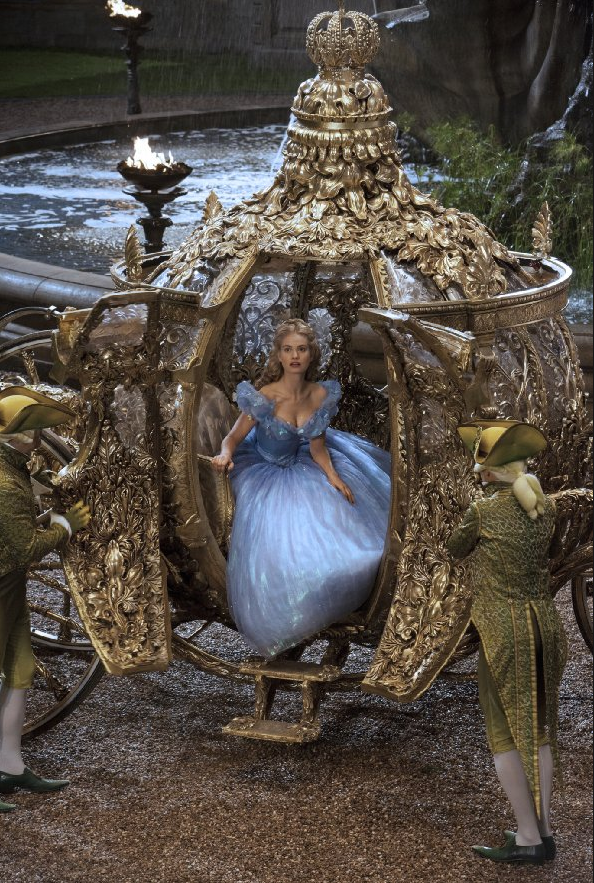

Pumpkins, lizards, mice and a tattered dress are the main ingredients to a magical night with a prince — with the help of a fairy godmother, that is. The classic European folktale “Cinderella” has been told, written and filmed for ages. Perhaps the most iconic adaptation of them all is the 1950 Disney animated film “Cinderella.” Since the release of the Disney classic, the company has spent the past 65 years adapting 11 other folktales to create a Disney Princess franchise.
Maybe Disney ran out of princesses or wishes to revive the millennial generation’s adoration for the Disney royalty, but the company is now unveiling a series of live action Disney princess films. The first in the series is “Cinderella,” starring Lily James in the titular role. Director Kenneth Branagh had a difficult task with this new iteration of the classic tale: simultaneously create his own take on “Cinderella” while keeping in line with the Disney franchise. Of course, for a director who has been nominated for five Academy Awards and constantly adapts Shakespeare’s plays to the big screen, the translations have become a specialty of Branagh’s work, making him the best equipped for the momentous task.
At first, the concept of remaking “Cinderella” into a live-action film seemed to be an attempt to squeeze out just a bit more profit from the Disney princess franchise. Yet, Branagh develops and creates a fresh world from the original story; he accepts that most of the public already has some sense of the story behind “Cinderella” and uses this knowledge to his advantage. Branagh allows the plot to take the sidelines as he emphasizes the human element of the tale, one that was missing in the animated feature. The narrator (Helena Bonham Carter) gently walks us through the story elements when needed, but leaves the characters to develop their own personalities. Ella (Lily James) is kind and selfless, willing to do anything to please her stepmother (Cate Blanchett) and step sisters (Holliday Grainger and Sophie McShera). On the other hand, her stepmother grows to be cruel once she realizes that Ella is far better in every manner than her daughters. Even the romantic connection between Prince “Kit” Charming (Richard Madden) and Ella is something that extends beyond the scope of the magnificent ball. These characters truly draw the audience in, most remarkably through Blanchett’s performance, which manages to transform a one-dimensional character into one with some background beyond her overarching cruelty. Through this performance, Blanchett manages to portray a certain logic and reasoning behind the evil stepmother.
Of course, Branagh does not fail to provide the stereotypical Disney magic that audiences have come to expect. The special effects of the film radiate through Ella’s mice friends and the breathtaking views of the castle and its gardens. The ball itself has an extravagance that can rival the likes of Versailles at its peak. The special effects and costumes create a world that is both magical and pastoral; Ella’s ball gown in particular sparkles an almost luminescent blue as she walks up the steps to the castle and the Prince’s royal clothing seems to match and complement the dress. I would not be surprised if this film ends up with a nomination for best costumes at the Academy Awards.
However, “Cinderella” is by no means a perfect film. Branagh tends to rely too much on special effects as a crutch for camerawork. The exterior shots are breathtaking, but there seems to be one too many aerial shots of the castle. Yet, sometimes a true directorial moment will shine through the sheen of computer graphics. Ella and the prince’s first meeting displays alternating spinning close ups of the two characters as they blush at each other. Sadly, moments such as these tend to be quickly followed by a scene flaunting special effects, slightly taking away from Branagh’s style. Of course, the scenes in which these two elements work together stand head and shoulders above the rest of the film. If only “Cinderella” were filled with more of those scenes.
“Cinderella” is not a film that will change the world, but it is one that will entertain and reinvigorate the universal appreciation for the fairy tale. Branagh chooses to make “Cinderella” neither about the injustices of servitude nor about feminine power, in contrast to the most recent Disney princess film “Frozen.” Instead, this film brings a human element to the animated classic. Ella transforms from a lucky girl who has a fairy godmother into a young woman who has spent years of her life in abuse and still manages to see the silver lining. By the end, Ella makes the viewer believe that simple optimism can exist in the harsh reality that we live in.